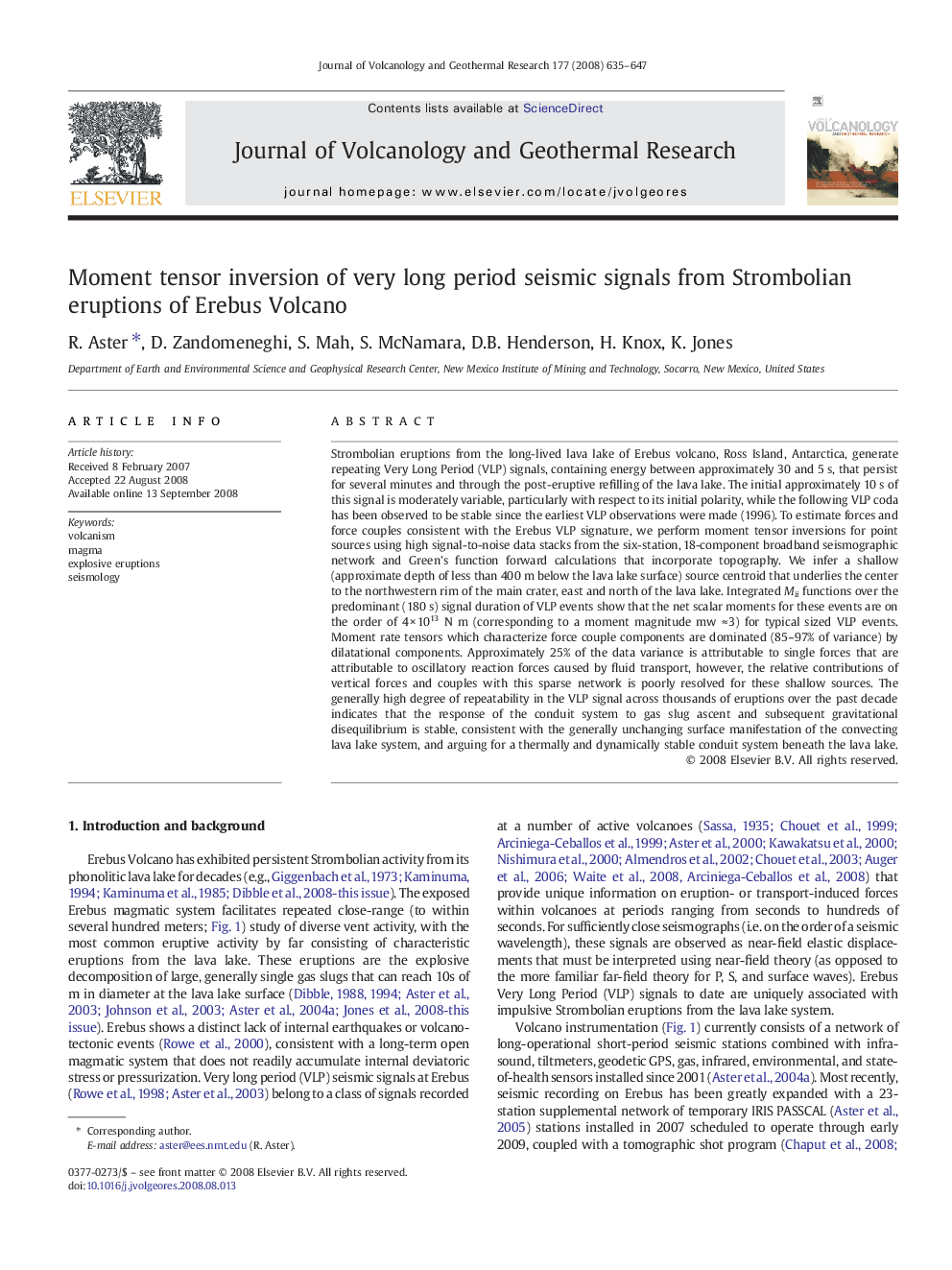| کد مقاله | کد نشریه | سال انتشار | مقاله انگلیسی | نسخه تمام متن |
|---|---|---|---|---|
| 4714627 | 1353978 | 2008 | 13 صفحه PDF | دانلود رایگان |

Strombolian eruptions from the long-lived lava lake of Erebus volcano, Ross Island, Antarctica, generate repeating Very Long Period (VLP) signals, containing energy between approximately 30 and 5 s, that persist for several minutes and through the post-eruptive refilling of the lava lake. The initial approximately 10 s of this signal is moderately variable, particularly with respect to its initial polarity, while the following VLP coda has been observed to be stable since the earliest VLP observations were made (1996). To estimate forces and force couples consistent with the Erebus VLP signature, we perform moment tensor inversions for point sources using high signal-to-noise data stacks from the six-station, 18-component broadband seismographic network and Green's function forward calculations that incorporate topography. We infer a shallow (approximate depth of less than 400 m below the lava lake surface) source centroid that underlies the center to the northwestern rim of the main crater, east and north of the lava lake. Integrated Mii functions over the predominant (180 s) signal duration of VLP events show that the net scalar moments for these events are on the order of 4 × 1013 N m (corresponding to a moment magnitude mw ≈ 3) for typical sized VLP events. Moment rate tensors which characterize force couple components are dominated (85–97% of variance) by dilatational components. Approximately 25% of the data variance is attributable to single forces that are attributable to oscillatory reaction forces caused by fluid transport, however, the relative contributions of vertical forces and couples with this sparse network is poorly resolved for these shallow sources. The generally high degree of repeatability in the VLP signal across thousands of eruptions over the past decade indicates that the response of the conduit system to gas slug ascent and subsequent gravitational disequilibrium is stable, consistent with the generally unchanging surface manifestation of the convecting lava lake system, and arguing for a thermally and dynamically stable conduit system beneath the lava lake.
Journal: Journal of Volcanology and Geothermal Research - Volume 177, Issue 3, 10 November 2008, Pages 635–647